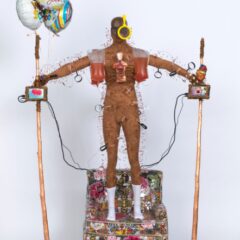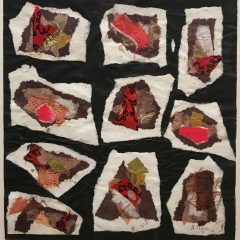This week’s Weekly has my review of MoMA’s show Home Delivery. Below’s the copy with some pictures. More photos at flickr. And see our previous post for more.
Pre-Fabulous

Digitally Prefabricated Housing for New Orleans in MoMA’s Home Delivery show.
MoMA’s new architecture exhibit, “Home Delivery” focuses on the history of prefab housing. In addition to the expected table-top architectural models, the museum presents five full-scale prefab model homes. The MoMA Home Show, in the empty lot next door to the museum, is a great voyeuristic tromp through amazing prefabs where you can climb the stairs, sit at the kitchen table and feel what it would be like to inhabit such a place.
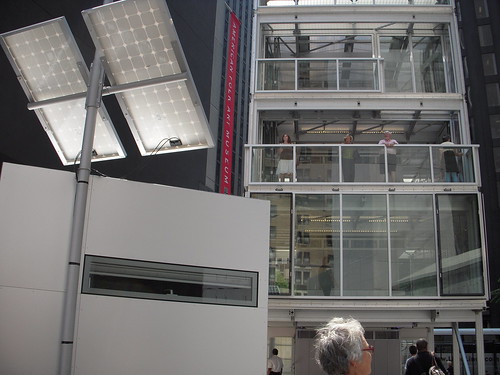
Cellophane House towering over the site. Micro Compact House with solar panel (left). Libby’s in the foreground.
Far from the prefabs of yore, MoMA’s five model homes present some of the most forward-thinking ideas about sustainable architecture. Solar panels are everywhere and in the case of the most stunning work, the five-story Cellophane House by Philadelphia’s architecture firm KieranTimberlake composed of experimental materials (plastic flooring and NextGen SmartWrap™ facade) with modular methods.
Not only does this home have solar panels but its façade has photovoltaic modules that also harvests energy from the sun and a system to store and channel the energy as needed. An interior, second skin has a UV blocking film.
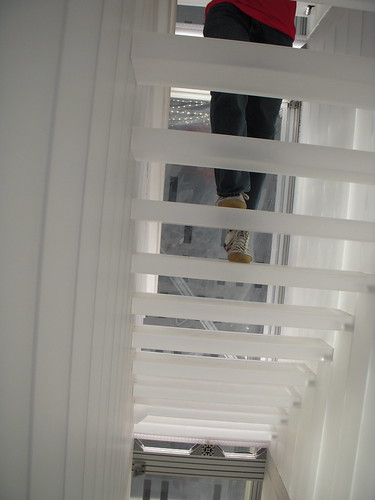
White plastic flooring and plastic floating stairs in Cellophane House.
As for the modular approach, the architects work with standard-size materials so there’s no waste. The modules (the architects call them “chunks”) were manufactured at Kullman Buildings Corp. in Lebanon, NJ and trucked to the site. If you’re curious to watch how they were assembled (they took a week to put together) check out the riveting time-lapse photo montage on the architects’ website.

Standing on the back porch of Cellophane House.
Spending time in Cellophane House—a glass house, actually—where every detail is visible inside and out through the building’s clear plastic skin, you might wonder how this house would handle heat. Because this is a piece of research as well as a real house they’d make for you if if you ordered one, the architects installed heat and cooling monitors to check the house’s temperature and track heat losses and gains. Cellophane House at MoMA is in the shade of nearby big buildings so cooling is not a big issue right now.
Design-wise, the house is a chameleon. In the urban setting it feels very urban. But in the woods it would probably make you feel one with nature.
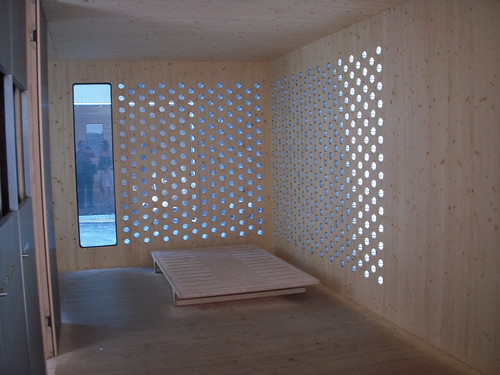
System3’s bare bones approach to a bedroom. It’s open to the rest of the one-room house.
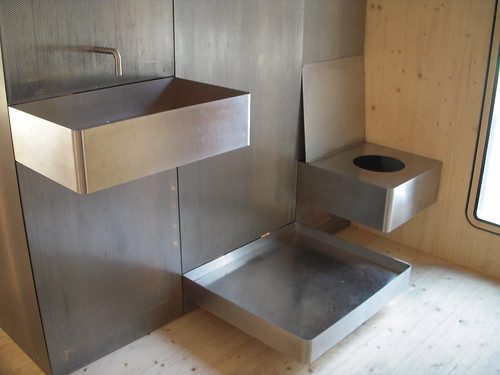
SYSTEM3, a small one-story house designed by Oskar Leo Kaufmann and Albert Rüf, is a more modest affair. Its most shocking feature is its wall-less bathroom with what looks like prison cell metal fixtures. This lack of privacy and comfort may signal what’s in store for us in the future but it’s not a pretty picture.
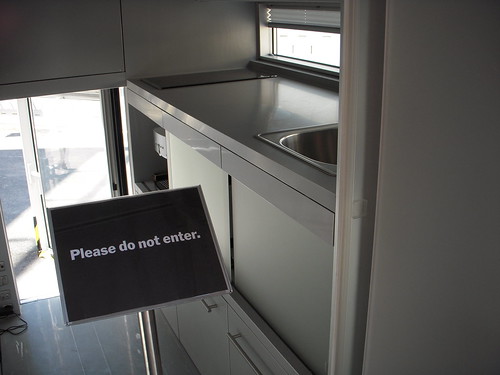
Micro Compact House is so tiny they don’t want you to go inside.
Micro Compact Home by Horden Cherry Lee Architects (London) and Haack + Höpfner Architects (Munich) is a darling little metal cube on stilts that feels like an Airstream trailer gone cubic. The little home is the natural partner of the Smart Car.
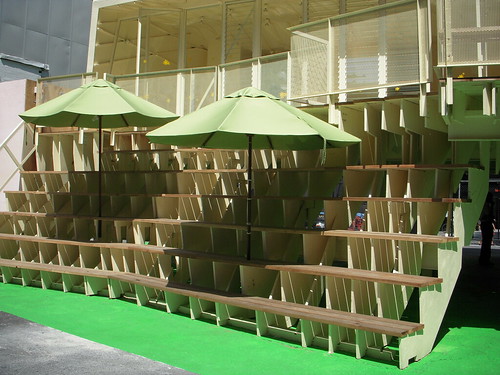
Burst008 looks like a beach house.
BURST008 by Jeremy Edmiston and Douglas Gauthier (New York) has a lovely beach house feel. Raised on stilts and fronted by bleachers perfect for watching beach volleyball, the house’s plywood and wallboard construction seems a little brut and rough, yet the light pouring in the glass front wall gives the place an almost celestial glow.
Massachusetts Institute of Technology Architecture Professor Lawrence Sass and his students constructed the most poignant model, Digitally Fabricated Housing for New Orleans. The house, which looks just like a NOLA shotgun complete with gingerbread trim, shows how architects have taken the lead on social and well as ecological issues.
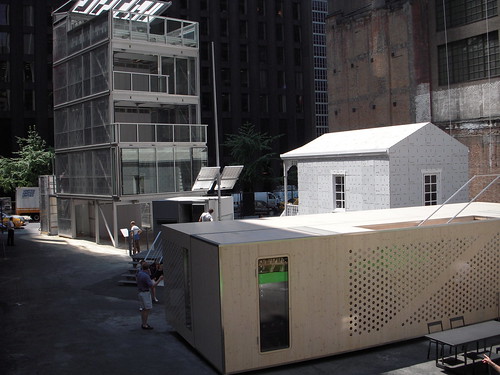
Prefab installation at MoMA is very theatrical–the little houses look like stage sets.
MoMA architecture curator Barry Bergdoll, who organized the show, writes on the website’s project blog that his exhibit is about raising issues in architecture at a time when people are rethinking materials and methods and that we need to radically change the way we live.
James Timberlake will lead a tour of his group’s Cellophane House on Oct. 15. Also on that day, there’s a panel discussion and symposia with all 5 architectural groups.
“Home Delivery: Fabricating the Modern Dwelling”
Through Oct. 20. Museum of Modern Art, 11 W. 53rd St. New York, N.Y. 212.708.9400.



